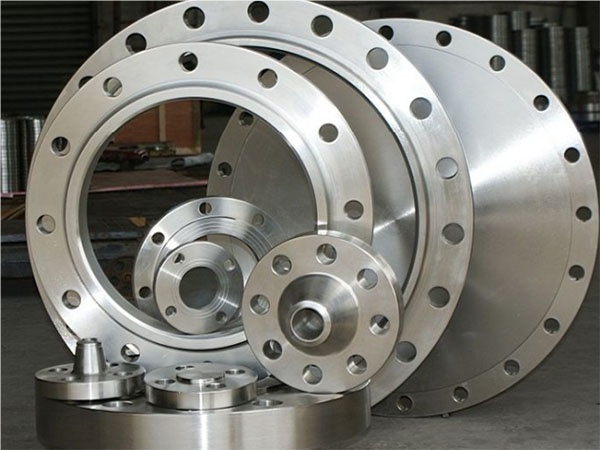Types and characteristics of common flanges
Flange is an important part for pipe connection, usually fixed by bolts and sealed with gaskets. It is not only used for the connection of pipelines, but also widely used for the import and export connection of equipment. The following is a detailed description of the common flange types:

1. Flat welding flange
The aperture of the flange of the flat welded flange is slightly larger than the outer diameter of the pipe, and the pipe can pass directly through the center of the flange and be welded and fixed. Its welding method is single-sided welding, usually welding a circle on the outside, and the welding process is simple. Suitable for low pressure pipeline, can not withstand greater pressure, with easy installation, low cost characteristics. However, because there is only one side weld, its sealing and strength are weak, and it is not suitable for high pressure conditions.
2. Butt welded flange
The butt welded flange has a conical neck, and is connected to the pipeline by bevel-butt welding, with high weld quality and good mechanical strength. The weld of the butt welded flange is consistent with the material and shape of the pipe, which ensures the strength of the joint point, smooth transition of the weld, and reduces the concentrated stress. Butt welded flange has high temperature resistance, high pressure, good sealing, suitable for important pipelines, while its manufacturing and installation costs are high, and the welding process requirements are high.
3. Integral flange
The integral flange is cast or forged in one piece with the pipe or equipment, and the structural strength is high, can withstand large bending and vibration and does not require additional welding process. High reliability, suitable for high pressure or extreme environments, but the cost is high, and maintenance and disassembly are inconvenient.
4. Threaded flange
It is threaded to the pipe and usually does not require welding. It has the characteristics of easy installation, suitable for field construction or difficult to weld, the disadvantage is that the sealing performance is limited, and the thread is susceptible to corrosion.
5. Socket welding flange
Socket welding flange is welded after the pipe is inserted into the socket, the weld is on the outside of the flange, and the other end is bolted. The welding position of the socket welding flange is clear, which is convenient for construction, and the strength of the flange is high, which is suitable for high-pressure small-caliber pipelines. Socket welded flange has the advantages of high reliability and easy control of construction quality, but the internal gap is easy to accumulate corrosive media.
6. Blind flange
Blind flange is a non-hole design, mainly used to fix or seal the end of the pipeline frame or close the pipeline system or container opening, its closed performance is strong, easy to disassemble, can withstand the high pressure inside the pipeline.
7. Lap flange
The lap flange can be rotated freely and needs to be used with the flanged short pipe. Its structure design is convenient for alignment and suitable for frequent disassembly occasions, and has the characteristics of economic and practical, convenient disassembly and assembly.
8. Ring connection flange
The sealing surface of the ring connecting flange has a ring groove and is sealed by a metal ring gasket. Its sealing performance is excellent, especially suitable for high temperature, high pressure occasions, it has a good leak prevention effect, suitable for petrochemical, oil refining, nuclear power and other demanding sealing occasions.
